Are you SO DONE with potty training? It is seriously the hardest, most involved thing to get a baby to switch from a diaper to a potty. Why does it need to be so hard??!!?? Fortunately, somewhere along the way, I found my vintage parenting book, and it had a step-by-step method, with ages to start at, that worked!!!! I think everyone should know about this method, so without further ado, I present vintage potty training!
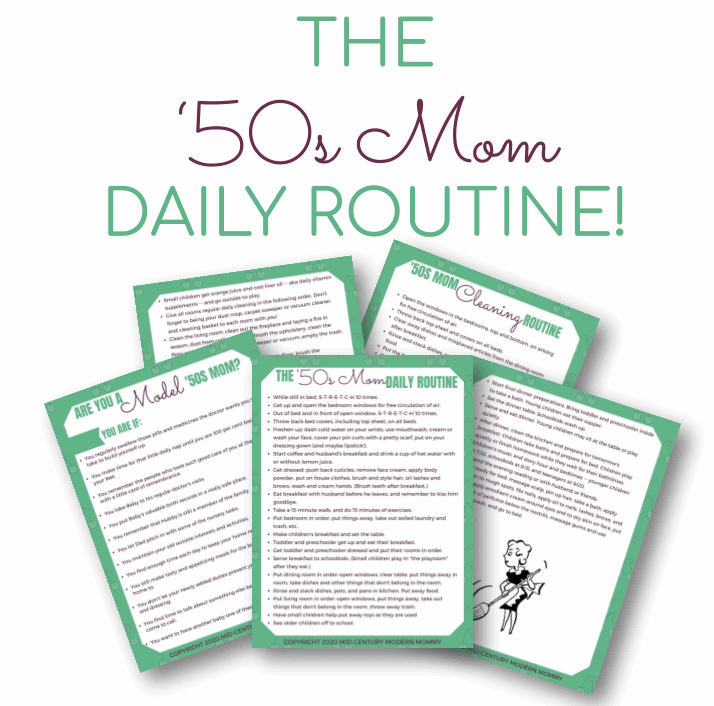
Get Our Mid-Century Mom Daily Routine FREE!
Begin Bowel Training First
This post contains affiliate links. If you click a link and make a purchase, I may receive, at no additional cost to you, a small commission. Find out more on my Disclosures page, and thank you so much for your support!
Bowel training comes first because it is usually regular. Wait until Baby can sit up well by himself. He is also probably eating solids at this point, as well. (I usually wait until around 9 months to start this, but the book says to start as early as 6 months!)
Begin by observing for a week or so, watching for the times when he has a bowel movement. If you can find one that occurs at about the same time after breakfast each day, start there!
Never start ANY kind of training, potty or otherwise, unless your baby is having a happy, healthy day. Why add to his stress when he isn’t feeling well?
The best way to start is with a potty seat that fits on the adult potty (affiliate link). I’ve had kids with balance issues, and they always preferred the kid with side handles, so that’s what I recommend. I also like it to have a built-in stool.
Bring Baby to the bathroom, and let him see the new potty seat. Talk to him about it. Then, when the usual time for the movement comes, set him on it.
For the first few times, it’s a good idea to sit with him, hold his hand, and make cheerful comments. (Vintage potty seats had buckled straps like high chairs, so you could leave your baby. I don’t recommend leaving them alone at this age unless you can find a potty seat where they can be buckled in.)
Keep him on the potty seat for 5-10 minutes, but not more than 10 unless he’s actually pooping. Don’t scold, don’t punish, and don’t hurry him. Do your best to keep potty training happy. But be kind, firm and consistent while you train. Praise accomplishments and ignore failures.
After Baby becomes used to the seat, he can be strapped in and left alone–but move the toilet paper out of reach. Also, once he is having his morning movement in the potty most of the time, you can start trying to “catch” the other movements, using the same timing method.
Also, while you train, keep in mind that adding new foods to the diet or using laxative foods may change the timing and frequency of his movements. Accidents are not uncommon during training, but you can often manipulate the laxative foods in the diet to solve some of the problems. Give stewed fruit at breakfast instead of supper. Or use smooth cereals instead of coarser ones.
Bladder Training Comes Later
Don’t expect your child to be ready for bladder training before 18 months. Also, bladder training is much easier when Baby is bowel-trained and understands what is expected of him when he sits on the potty.
Bladder training begins with putting him on the potty at certain times of the day. Put him on the potty when he gets up in the morning, before and after each meal, before and after his nap, and before going to bed. Also, put him on the potty every 2 hours (set a timer if you need to!) during his waking hours. If he can’t hold it for those two hours, he probably isn’t ready for bladder training anyway.
Keep him on the potty for no more than 5 minutes each time. If he doesn’t pee, don’t say anything, but if he does pee, praise him.
Change him immediately after an accidental wetting. (Supposedly, this teaches him to like dryness. However, if you use cloth diapers and change them after every feeding, Baby probably already likes dryness. Also, I usually include comments about how yucky it is/feels/smells when you wet your pants. Probably not supposed to say those things, but I have a hard time keeping my mouth shut.)
When you are bladder training, you should keep track of the timing. He probably won’t be able to tell you he “needs to go” until he is 2. Stress and excitement cause more accidents, as well.
Clothes During Bladder Training
When you begin bladder training, put Baby in training pants (affiliate link). Don’t put them in diapers anymore. (Except at night, until you begin night training.)
This is also an excellent time to begin putting them in little 2-piece suits. I love putting my babies in vintage clothes, and now is the time that I switch to overalls, playsuits, dress-and-panties, or bobby suits. You can buy several outfits in the same color, and switch the bottoms out after accidents without having to wash the whole outfit every time.
Don’t put him back in diapers if you are taking him out, either. Take a potty seat, and a few extra outfits, and be prepared. Again, consistent expectations are key.
Also, after he “gets it,” little boys can (and should!) learn to pee standing up. (This is usually a lesson for Dad or Big Brother to teach him.) Once he knows how to do that, he gets to start wearing pants with an opening in front. He’s a big boy now!
Nighttime Bladder Training
Begin nighttime bladder training only when daytime bladder control is well established. Once night training begins, you will remove his diaper, just as in daytime training, so having a stock of waterproof pads (affiliate link) will save your mattress!
Every night, put him in his pajamas without a diaper and put him to bed at his usual bedtime. At 10 o’clock, get him up and take him to the potty. If he has already wet, put him in a clean sleeper and dry the bed. Don’t get him up again. He won’t attain complete night control until his bladder is physically ready.
The next time to catch is right upon waking. This is the most difficult time to catch. It is often better to get him up 15 minutes before his usual first waking, and then put him back in bed afterward. For example, if he usually wakes up and wets his bed at 6 o’clock, get him up at quarter to, take him to the potty, and then put him back in bed until his usual hour of rising.
Don’t worry about getting him up any oftener than these two times. Always change his pajamas and dry his bed when he wets, but let him sleep except for the 10 o’clock and morning wakings. Accidents are not a cause for concern. Just use waterproof pads to keep the mattress protected.
Good Hygiene
You should also begin teaching about handwashing when you begin bowel training. This is an excellent time to get a little bathroom step stool (affiliate link) for the sink. Teach him to wash his hands every time he uses the bathroom.
Now is also the time to begin teaching him to wash his hands and face before and after eating, when he wakes up, and before bed. Hand washing is the best way to keep kids from getting sick; it’s important to teach it early.
Since bowel training usually starts around the same time as solid foods, it is an excellent time to begin regular tooth brushing (affiliate link), if you haven’t already. Even if they have no teeth yet, begin brushing their teeth after every meal, when they wash up. Good dental habits are a wonderful thing!
Finally, you were probably brushing Baby’s hair (affiliate link) before now, but adding hair-brushing twice a day helps to keep Baby’s scalp healthy. And a daily bath is a must! In fact, during the whole of Baby’s second year, you may want to give him two baths a day, thanks to all his new playing!
Potty Trained
And that’s the entire 1950s method for potty training. It is a slow process, but it works well for cloth diapering aficionados and when you follow the original age recommendations, your child is usually trained by the age of 2. Even night training is covered! And most of my children don’t even wet the bed after 30 months old using this method.
This method is also already worked into my schedules for babies, toddlers, and preschoolers since I use vintage schedules. It fits beautifully into my days as a vintage housewife. And it reminds me not to stress about potty-training! I highly recommend this vintage potty training method, especially if you are having trouble with potty training. And if you appreciate these vintage advice posts, please Pin them!
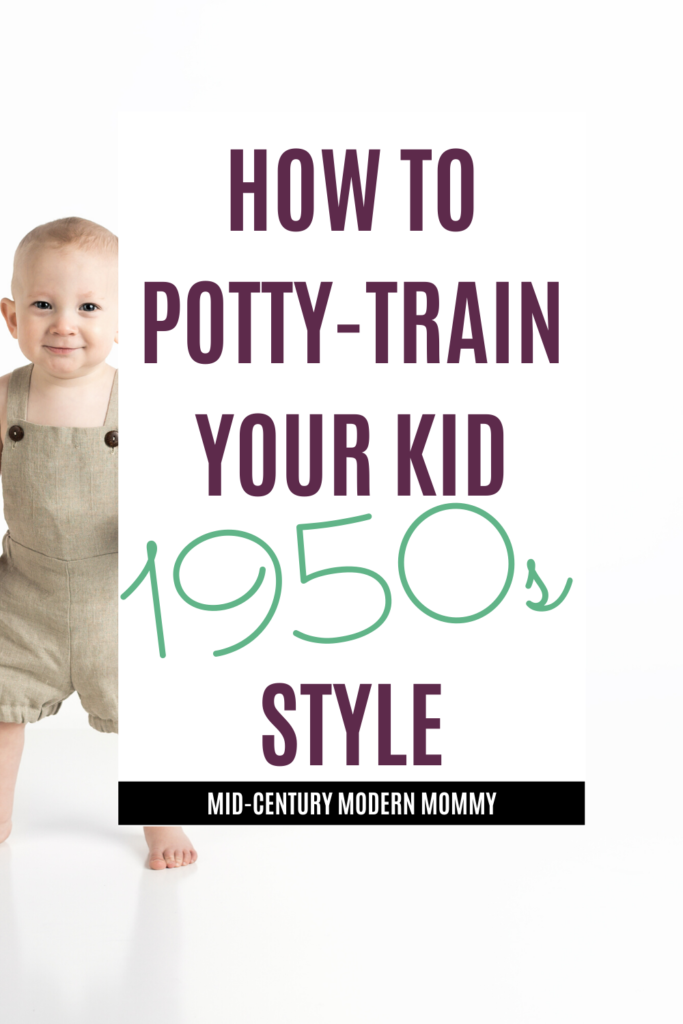

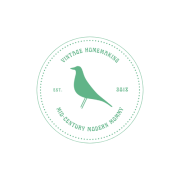
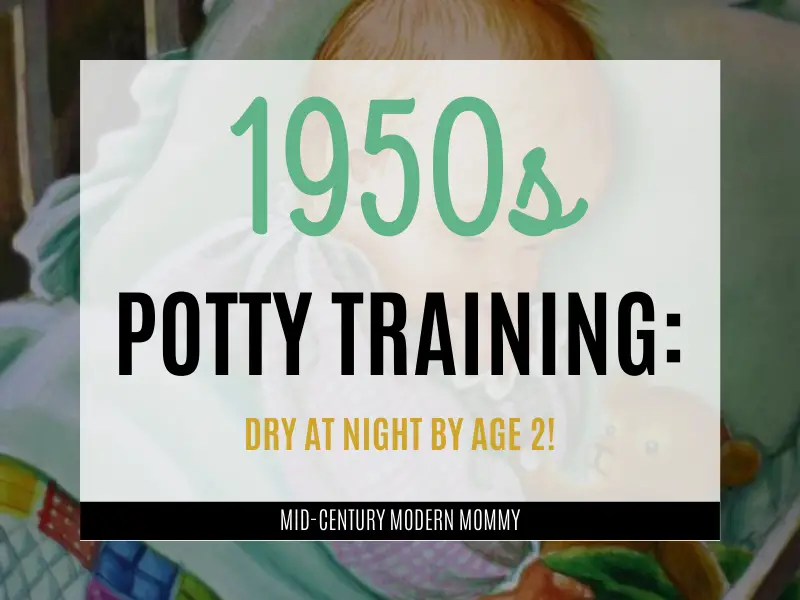
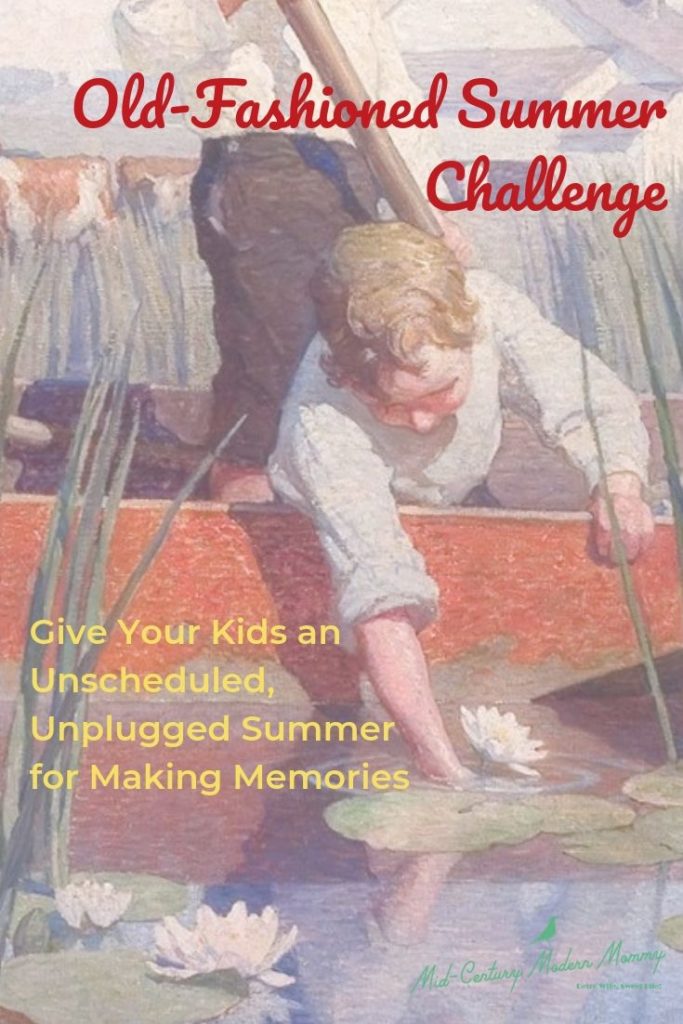
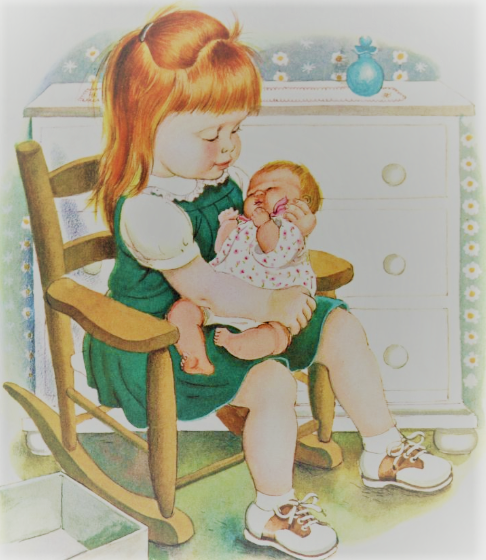
I’m excited to try this out in just a few months! My older two children were potty trained by two, but I didn’t have a method or plan and it was frustrating at times. I cloth diaper full time and don’t love it so much once Baby starts solids, so I’m all about getting them trained ASAP.🙂 Looking forward to using this method with Baby 3!
I also use cloth diapers, and I totally understand about solids!
I’m currently training my oldest & it has NOT been easy. I’ll have to save this post to try with my infant!
I tried so many different ways. I tried almost everything (except that whole don’t potty-train, they’ll do it all by themselves when they’re ready, because . . . seriously?), and this was the only consistently successful way I found!